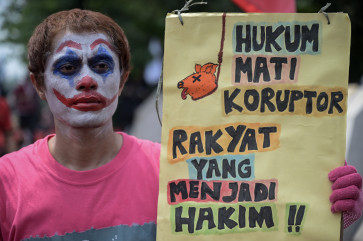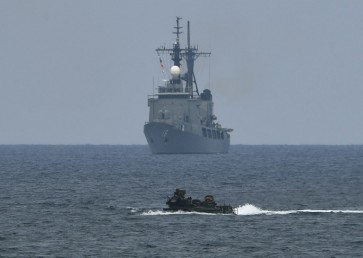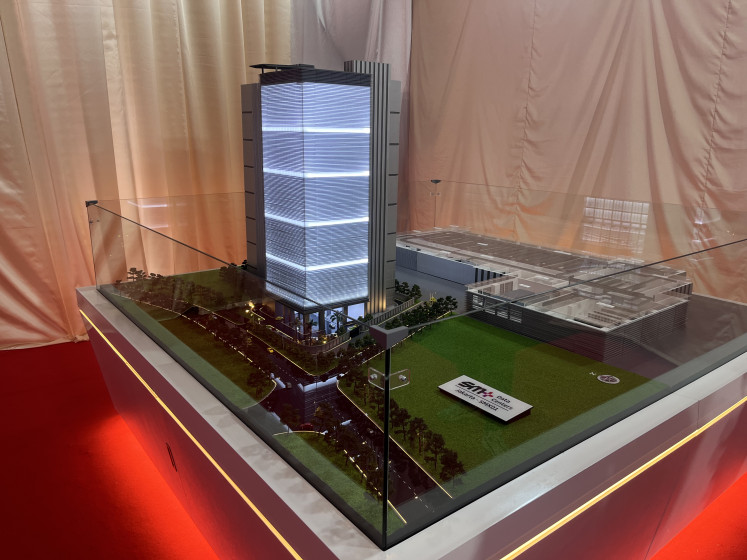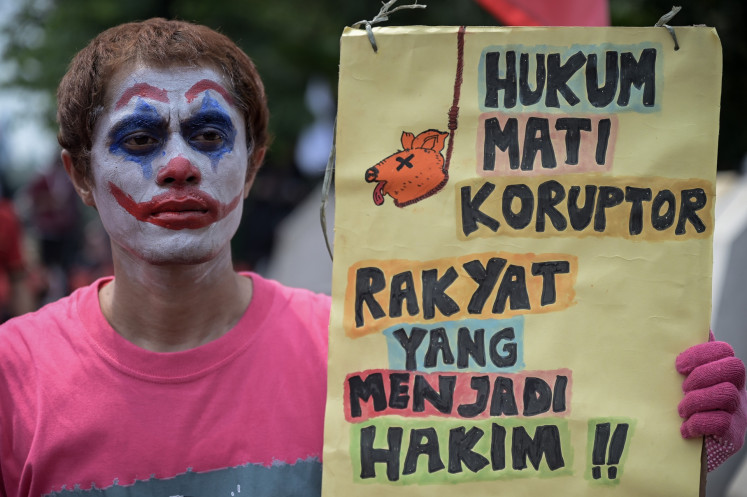Popular Reads
Top Results
Can't find what you're looking for?
View all search resultsPopular Reads
Top Results
Can't find what you're looking for?
View all search resultsC. Sulawesi’s focus on fisheries gets support
The central government has given its support to the Central Sulawesi administration’s plan to focus on maritime affairs and fisheries given the vast potential in every regency and city of the province
Change text size
Gift Premium Articles
to Anyone
T
he central government has given its support to the Central Sulawesi administration’s plan to focus on maritime affairs and fisheries given the vast potential in every regency and city of the province.
The support was shown when Maritime Affairs and Fisheries Minister Sharif Cicip Sutardjo handed over a grant of Rp 44.5 billion (US$5.2 million) during a working visit to Central Sulawesi on May 5.
The grant was intended for the development of the Rural Mina Business Development (PUMP) program, earmarking Rp 11 billion for sea fishing for nine regencies and cities and Rp 3.2 billion for fish cultivation under the PUMP program in 10 regencies.
At the provincial level, Rp 650 million will be allocated to build fish markets, Rp 2.07 billion for ice factories and Rp 100 million for fish marketing.
Palu City will also receive Rp 522.5 million to support community-based salt farming initiatives.
“The assistance will improve people’s welfare and help small-scale entrepreneurs in the marine and fisheries sectors,” Sharif said in Donggala, Central Sulawesi.
Meanwhile, Central Sulawesi Governor Longki Djanggola said 165,168 tons of fish a year were harvested from the Sulawesi Sea and Palu Bay alone.
Longki said that the province had a sea territory of 120,986 square kilometers, annual fisheries resources of 428 million tons and annual sustainable fisheries resources of 214 million tons.
Djanggola added that Central Sulawesi’s resources were divided into three fishery development zones: the Malacca Strait and Sulawesi Sea with 420 million tons, Tomini Bay with 587 million tons and Tolo Bay with 382 million tons.
The fisheries resources are managed by 800 fishermen using traditional jakung boats, 1,420 fishermen using outboard-motor boats and 82 fishermen using on-board motor boats.
“We will take advantage of the marine and fisheries resources in the province to propel the fisheries industry, which is integrated from upstream to downstream,” Djanggola said.
Human resources remained an obstacle, he said, particularly in changing the mind-set of the community.
Another setback was a lack of facilities such as community-based fish ponds for fish farming, breeding stock, floating nets and off-shore aquaculture facilities, he added.
According to Djanggola, the fisheries sector needed more vessels between 15 and 30 gross tons and fish-landing facilities in several regencies.
The programs were aimed at enhancing productivity and adding value, as well as meeting market demand.
The government will also implement eco-friendly technology, enhance added value through diversification of processed products and improve packaging and quality.
Djanggola said that the province’s prime commodities could be developed in accordance with the comparative and competitive prime commodities of the province, namely seaweed, tuna, shrimp and demersal fish.
“The commodities have very good prospects to be developed in an effort to industrialize the maritime and fisheries sectors,” Djanggola said.










